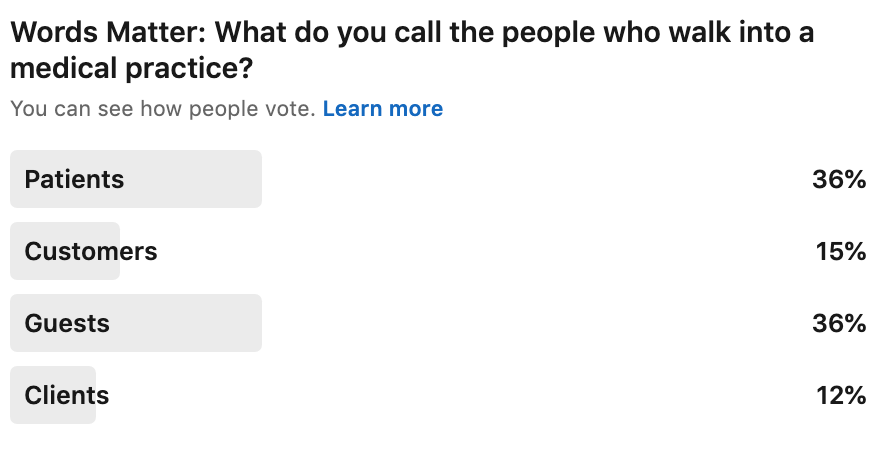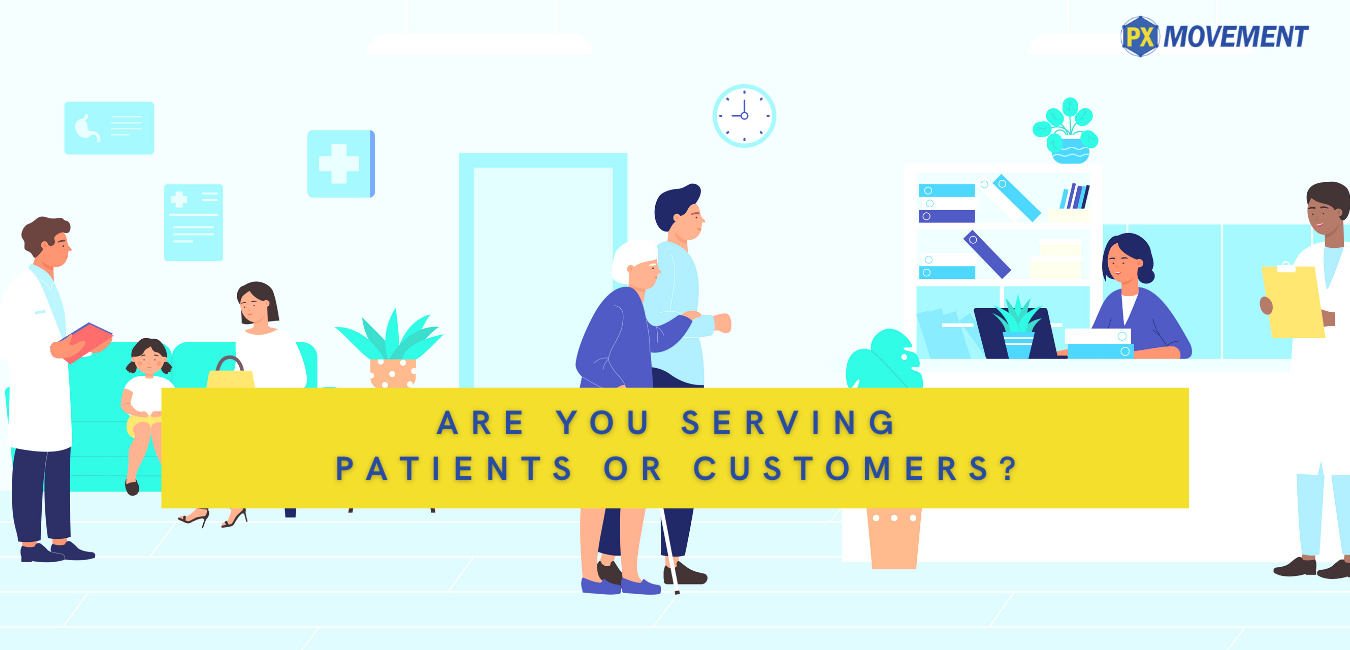One of the reasons healthcare is “stuck” in the old ways begins with how we view the people who are coming in for medical services.
I recently asked my followers on LinkedIn to weigh-in on what specific word they use to describe people who go to see the doctor. You can see the results in the chart below. It’s an improvement over what I expected, with over half the respondents using a term other than “patients.”

Why Does the Word Matter?
It’s not an either/or proposition. We need to recognize, as my colleague and friend Amin Ash commented, that there is something sacred about the doctor-patient relationship that warrants use of that word. It’s why we call it “patient experience” and use PX to denote that patient experience is a unique type of customer experience.
In reality, people are BOTH patients AND customers. It’s not an either/or proposition, but rather one that says people have needs in each area.
A great description was put forth years ago by two physicians in the Washington, DC area. When patients are “horizontal” (eg, on the table), they are a patient. They are seeking the highly technical skills of the doctor. No argument here – when a diagnosis or treatment is underway it is strictly a patient-doctor interaction.
However, when patients are “vertical” (eg, standing up), they are seeking the customer service skills of the doctor and every member of the practice.
Patient AND Customer
The bottom line? Doctors need to make the customer service diagnosis before they go on to make the clinical diagnosis.
So, think “vertical” then “horizontal.” Good advice from physicians who get it when it comes to patient experience!

